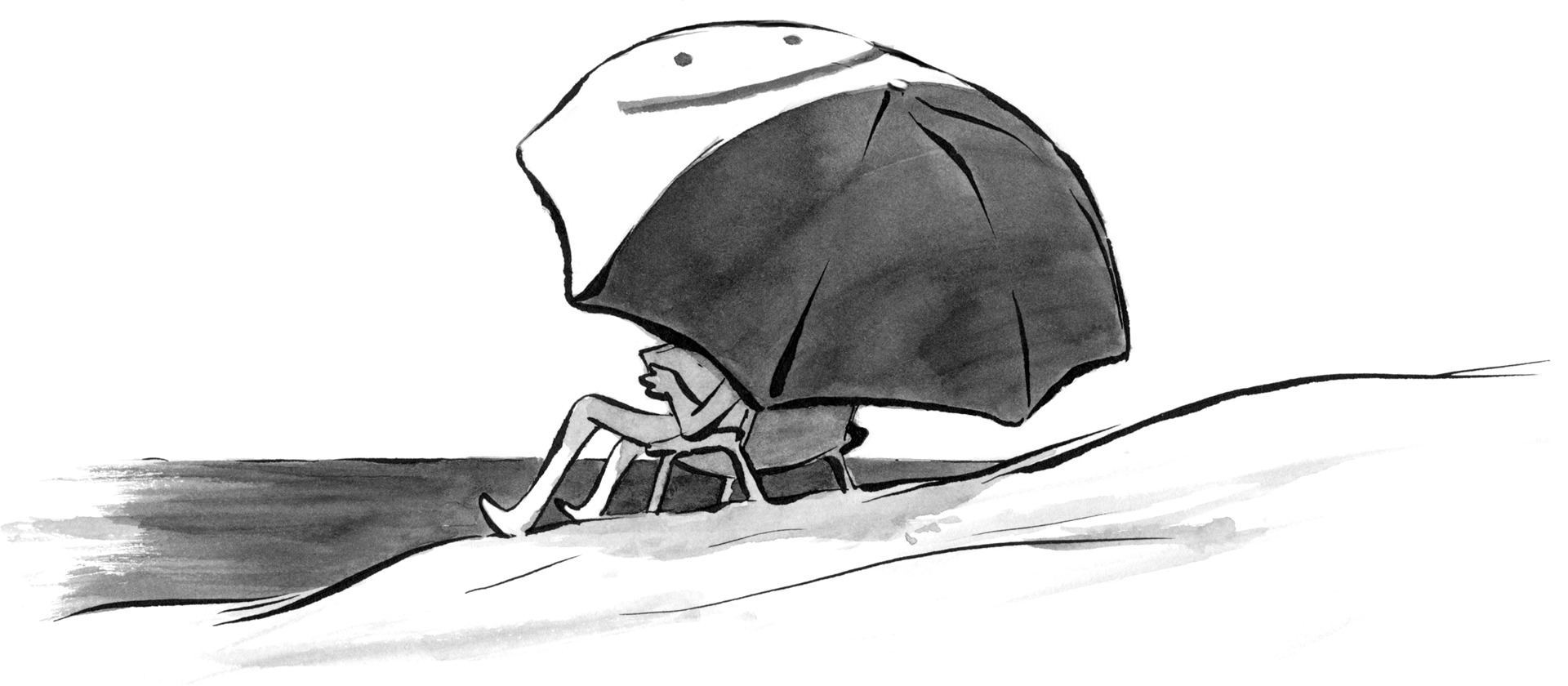Presenting the second annual ALA Summer Reading Issue—a deep pool of editor’s picks from the recent archives of A List Apart, sprinkled with some of our favorite outside links. This summer’s picks are arranged in clusters that echo the design process, and like all good summer reading, they travel light. (This issue is also available as a Readlist, suitable for reading on Kindle, iPhone, iPad, Readmill, or other ebook reader.) Dive in!
Establishing an ethos#section2
We’ve become keenly aware the web has moved beyond the desktop: to screens large and small, to data connections both strong and weak. Has our understanding of web design moved along with it? The following articles brilliantly sidestep the dogma—app vs. native! responsive vs. device-centric!—and speak to the why of our new, multi-device discipline.
—Ethan Marcotte, technical editor
The Best Browser is the One You Have with You#section3
By Stephanie Rieger | March 13, 2012
For a Future-Friendly Web#section4
By Brad Frost | March 13, 2012
The Web Aesthetic#section5
By Paul Robert Lloyd | September 25, 2012
Column: Windows on the Web#section6
By Karen McGrane | January 23, 2013
From elsewhere#section7
Video: The Mobile Web is Dying and Needs Your Help, a talk by Paul Irish at Breaking Development Orlando, April 9, 2013
Getting to the core: content#section8
What will it take to prepare our content for diverse destinations? How can we make information easy to find, save, explore, and enjoy—on any screen? What’s the right pace for your product? These articles will help you make your content—and the interactions you design around it—ready for mobile…and everything else, too.
—Sara Wachter-Boettcher, editor-in-chief
Future-Ready Content#section9
By Sara Wachter-Boettcher | February 28, 2012
Content Modelling: A Master Skill#section10
By Rachel Lovinger | April 24, 2012
Everything in Its Right Pace#section11
By Hannah Donovan | August 14, 2012
Uncle Sam Wants You (to Optimize Your Content for Mobile)#section12
by Karen McGrane | November 05, 2012
Column: The Future is Unevenly Superdistributed#section13
By David Sleight | February 07, 2013
Column: Better Navigation Through Proprioception#section14
By Cennydd Bowles | March 07, 2013
From elsewhere#section15
Responsive Navigation Patterns, a Github collection by Brad Frost
Adapting our designs—and our workflows#section16
The web is evolving, making the rigid parameters we once worked within blurry and elusive. This means the roles, tools, and processes of a designer must also change—the days of working only in Photoshop are behind us. The following articles will arm you with new techniques to take you from the designer who creates pixel-perfect comps to the designer who can adapt.
—Yesenia Perez-Cruz and Tim Smith, acquisitions scouts
Style Tiles and How They Work#section17
By Samantha Warren | March 27, 2012
The Infinite Grid#section18
By Chris Armstrong | October 16, 2012
Responsive Comping: Obtaining Signoff Without Mockups#section19
By Matt Griffin | October 16, 2012
Column: Font Hinting and the Future of Responsive Typography#section20
By Nick Sherman | February 22, 2013
From elsewhere#section21
Made to Measure by Allen Tan for Contents Magazine, fall 2012
Media Query-less Design, Content-based Breakpoints & Tweakpoints by Dave Olsen, March 05, 2013
Video: The Revenge of the Web, a talk by Stephen Hay at Mobilism, May 16, 2013
Testing our assumptions#section22
It wasn’t long ago that we only felt like we needed to keep up with a handful of desktop browsers and a few predictable screen resolutions. We know better now: users expect a cohesive experience across dozens of browsers and hundreds of devices—from portable gaming systems to 50-inch televisions, from high-definition to grayscale screens, and over a huge range of connection speeds. With all these unpredictable contexts comes a host of new questions: what do we do about raster images? How do we stop the trend of increasingly massive page weights? We don’t have all the answers just yet, but the more data we gather through testing and experimentation, the closer we will get to them.
—Mat Marquis, technical editor
Responsive Images and Web Standards at the Turning Point#section23
By Mat Marquis | May 15, 2012
Testing Websites in Game Console Browsers#section24
By Anna Debenham | September 11, 2012
Mo’ Pixels Mo’ Problems#section25
By Dave Rupert | September 25, 2012
Vexing Viewports#section26
By Lyza Danger Gardner, Stephanie Rieger, Luke Wroblewski, and Peter-Paul Koch | December 18, 2012
The Era of Symbol Fonts#section27
By Brian Suda | March 12, 2013
From elsewhere#section28
Video: The Immobile Web, a talk by Jason Grigsby at Breaking Development Orlando, April 16, 2012
Responsive Design on a Budget by Mark Perkins, Clearleft Blog, January 16, 2013
Setting a Performance Budget by Tim Kadlec, January 28, 2013



Is it possible to make an free e-book of all these article’s? I’ve got no free internet when i’m on vacation. I like to know!
A free e-book would be great but I am willing to pay $5.00
You can use Instapaper and sync the content to your device. That way you can have all types of content, not just the summer issue.
Save each page as PDF using one of the free PDF programs out there?
EPUB version: http://readlists.com/44549f09/
Great reading list. Small point: given that this is a selection of articles by editors (plural), “a deep pool of editor’s picks” would be better written as “a deep pool of editors’ picks”.
If you are on a MAC just hit the Reader button and save as PDF
How come the top of this website’s home page is cut-off…? The title “A LIST APART” is partially buried in the top of the screen…:(
Is this the desired effect…or is their something wrong.?
I’m using Firefox Ver 22.0 on osx.
If you think Paula`s story is terrific,, last week my cousin’s step-mum recieved a check for $6795 putting in 10 hours a week an their house and the’re best friend’s sister-in-law`s neighbour done this for 8-months and made more than $6795 part-time from their laptop. use the guidelines from this web-site, http://m3mi.com/3621CHECK IT OUT
It is great article!
Thank you for sharing.
引越し侍